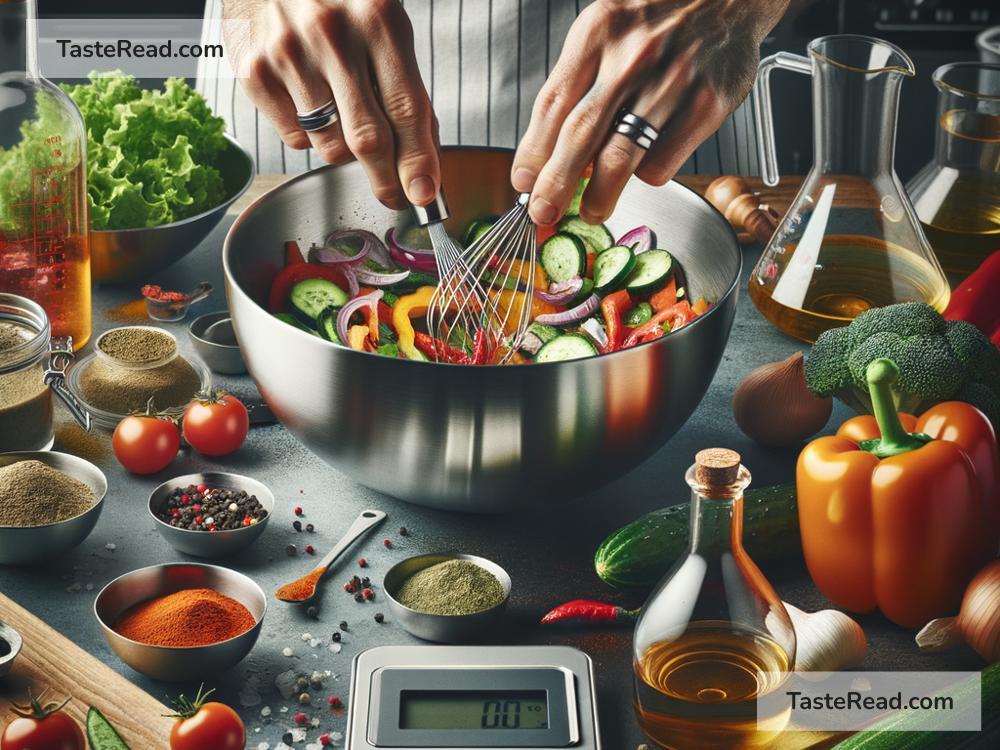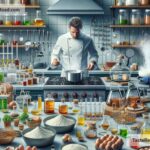The Science of Cooking with Chemical Design: Techniques and Tips
Cooking is more than just mixing ingredients in the kitchen—it’s science at work! Every time you bake bread, sear a steak, or make a creamy sauce, you’re using chemistry to transform food. Understanding the science behind cooking can help you improve your recipes and even experiment with new ideas. In this blog, we’ll explore the fascinating connection between chemistry and cooking, and share tips to help you become a “food scientist” in your own kitchen.
What is Chemical Design in Cooking?
Chemical design refers to the deliberate use of knowledge about molecules and reactions to control the outcome of cooking. For example, when you cook an egg, heat changes the proteins inside it, making the egg firm. This is a chemical reaction that transforms raw food into something delicious and safe to eat.
Food science explains why things like browning, thickening, or rising occur. By understanding what happens at a molecular level, you can design dishes with specific textures, flavors, and aesthetics. Scientific cooking isn’t just for professional chefs—anyone can use it to create better meals and solve common kitchen problems.
The Role of Heat in Cooking
One of the most important factors in cooking is temperature. Heat triggers chemical reactions that bring out color, smell, and taste in food. These reactions are called the Maillard Reaction and Caramelization.
- The Maillard Reaction:
Have you ever wondered why a seared steak smells amazing or why golden-brown toast tastes better than plain bread? This is thanks to the Maillard Reaction. When proteins (amino acids) and sugars in food are exposed to high heat, they create hundreds of flavor compounds. The result is that irresistible roasted or grilled taste!
Tip: To get the best Maillard Reaction, dry your food’s surface before cooking and use high heat. For example, pat a steak with a paper towel before searing it. Moisture prevents browning.
- Caramelization:
Caramelization happens when sugars in food are heated to high temperatures. This reaction creates sweetness and a complex flavor. It’s why onions become sweet when cooked slowly and why caramel sauce tastes so rich.
Tip: For perfect caramelized onions, cook them low and slow. Don’t rush this process—time creates depth of flavor.
Understanding Proteins and Precision Cooking
Proteins in food react to heat in different ways. When you cook eggs, meat, or fish, proteins break down and rearrange themselves. This process is called denaturation, and it changes the texture of food—for example, turning liquid egg whites into a firm, white surface.
Many chefs use tools like food thermometers for precise cooking because overcooking proteins turns them rubbery or dry. This is where sous vide cooking shines.
- Sous Vide Cooking:
Sous vide involves vacuum-sealing food and cooking it in a water bath at a specific temperature. By controlling heat exactly, the proteins remain tender, juicy, and evenly cooked.
Tip: You don’t need fancy equipment for sous vide. You can mimic the process by sealing food tightly in a zip-top bag and placing it in warm water maintained at a steady temperature.
The Science of Baking
Baking is perhaps the most scientific form of cooking since it relies heavily on chemical reactions. When you mix flour, sugar, eggs, and butter to make a cake, every ingredient serves a unique purpose.
- Leavening Agents:
Baking powder, baking soda, and yeast are leavening agents that make your baked goods rise. They produce gas (usually carbon dioxide) that creates fluffy textures. For example, when you add baking soda to cookies, it reacts with acids in the batter and releases gas bubbles that make the cookies expand.
Tip: Measure carefully when using leavening agents. Too much or too little can cause cakes to collapse or cookies to spread too much.
- Gluten Formation:
Gluten is a stretchy network formed when you mix water and wheat flour. It’s what makes bread rolls chewy and elastic. Kneading dough strengthens gluten strands, giving bread structure.
Tip: If you want softer bread, avoid over-kneading the dough. For cookies or cakes, minimize mixing to prevent excess gluten formation.
Tips for Better Cooking Using Chemistry
Here are some practical tips to apply chemical design in your kitchen:
-
Use Salt Strategically:
Salt doesn’t just make food salty—it enhances other flavors. Adding it early in cooking helps proteins release their water, while adding it near the end preserves crispness in vegetables. -
Harness Acidity:
Acids like lemon juice or vinegar brighten flavors and tenderize food. For example, marinating meat in acidic mixtures can break down proteins and improve tenderness. -
Experiment with Fat:
Fats (butter, oil, cream) are essential for flavor and texture. Fat carries flavor molecules and creates richness in sauces or bakes. -
Control Emulsions:
Making salad dressings or mayonnaise involves creating emulsions—a mix of fat and liquid. To prevent separating, whisk steadily or use stabilizers like egg yolks.
Why Chemistry Makes Cooking Fun
Understanding the science of cooking doesn’t take away the magic—it enhances it! When you know how chemical reactions work in your food, you can fix problems, create perfect dishes, and even invent your own recipes. Imagine being able to solve why your cake didn’t rise or learning to brew coffee with the exact strength you want—all by using science.
Cooking is chemistry we can taste. So, the next time you’re in the kitchen, think about the molecules behind every dish. With a little knowledge, you’ll be designing meals like an expert scientist. Happy cooking!


